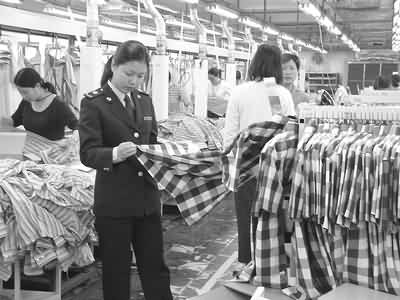 The eco-textile standard 100 is the most authoritative and most influential eco-textile standard in the world. This is initiated by the European Union. Eco-textiles certification is not a rigid indicator for entering the European and American markets, but many foreign importers attach great importance to this indicator. After some domestic enterprises have obtained this certification, the price of green label-labeled textile garments is often more than 20% higher than that of similar products without labels.
The eco-textile standard 100 is the most authoritative and most influential eco-textile standard in the world. This is initiated by the European Union. Eco-textiles certification is not a rigid indicator for entering the European and American markets, but many foreign importers attach great importance to this indicator. After some domestic enterprises have obtained this certification, the price of green label-labeled textile garments is often more than 20% higher than that of similar products without labels. At present, this certification requires annual review every year. Compared with last year's version, a number of new test items have been added to the categories of hazardous substances. The latest test standards for the detection of hazardous substances in textiles involve phthalates. Ester, dimethyl fumarate, etc. 6 detection adjustments. The upgrading of this standard can be said to mean that the difficulty of passing the certification is further increased, and the threshold for the entry of textiles into the EU market has further increased.
The specific monitoring projects, such as phthalates, are commonly known as plasticizers. This year's EU eco-textile technical specification increased the number of phthalates from the original six candidates to 12 items. And the sum of these 12 items is still limited to 0.1%. Dimethyl fumarate is a common moisture-repellent mildew-repellent agent for textile products. It is included in the new standard as a list of substances added to the list of regulated chemical residues, and a corresponding limit has been set. All of this means that these textiles in the latest market in the European Union market must meet the requirements of the European Union's eco-textile related regulations, while China, as the world's largest textile producer and exporter, must be involved in international trade in textiles and apparel. In order to maintain a good development trend, vigorously developing eco-textile products will become a trend in the future.
The new version of eco-textiles inspection standards imposes stricter requirements on export products. "Eco-textiles" refers to those textile products that are made of materials that are harmless or less harmful to the surrounding environment and are harmless to human health. "Eco-textiles" Standard "On January 27th, 2000, the State Environmental Protection Administration approved and began implementing the "Eco-textiles" standard, which states that products must not be subjected to chlorine bleaching. The product shall not be subjected to anti-mold finishing and flame retardant finishing. The product must not have musty, petrol and toxic aromas. If there is odor, it is proved that there is residue. The formaldehyde, extractable heavy metal content, pH value of leachate, color fastness and insecticide retention in the product should meet the requirements, and so on.
EU Ecolabel certification, established in 1992 by the European Community. The sign is a small flower, so it is also called "decal". Although the mark was introduced in the form of a law, whether the manufacturer applies for an eco-label is entirely voluntary. Since environmental protection is required in the entire manufactured ecological chain, Chinese institutions are unlikely to pass. Few Chinese companies apply, so it is essentially a green trade barrier.
Weihai Jocund Home Textile Co., Ltd , https://www.jocundhome.com